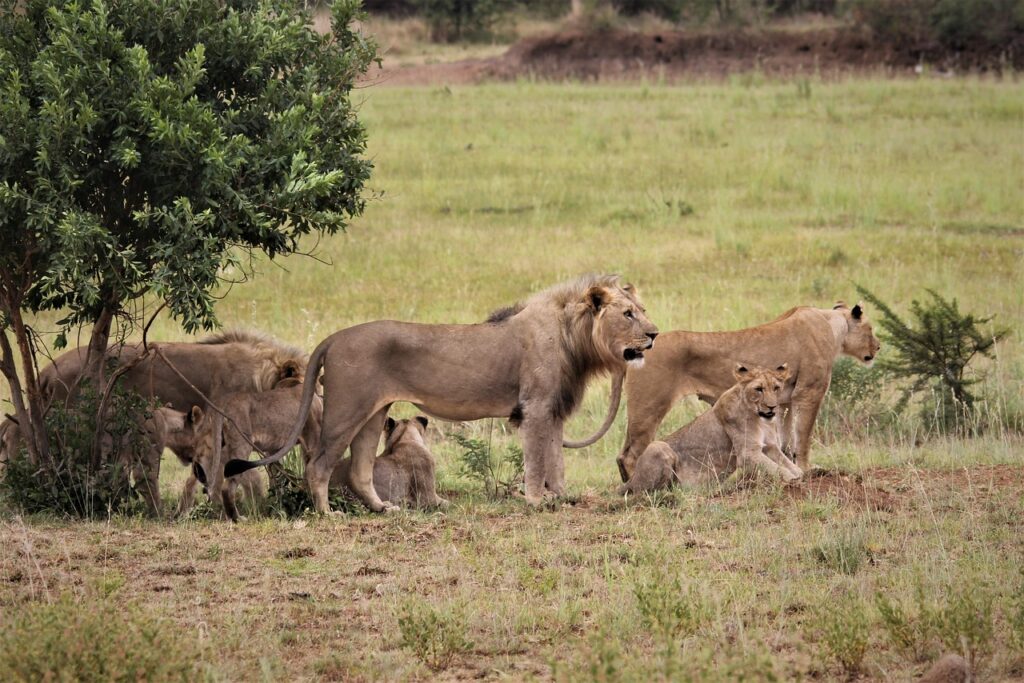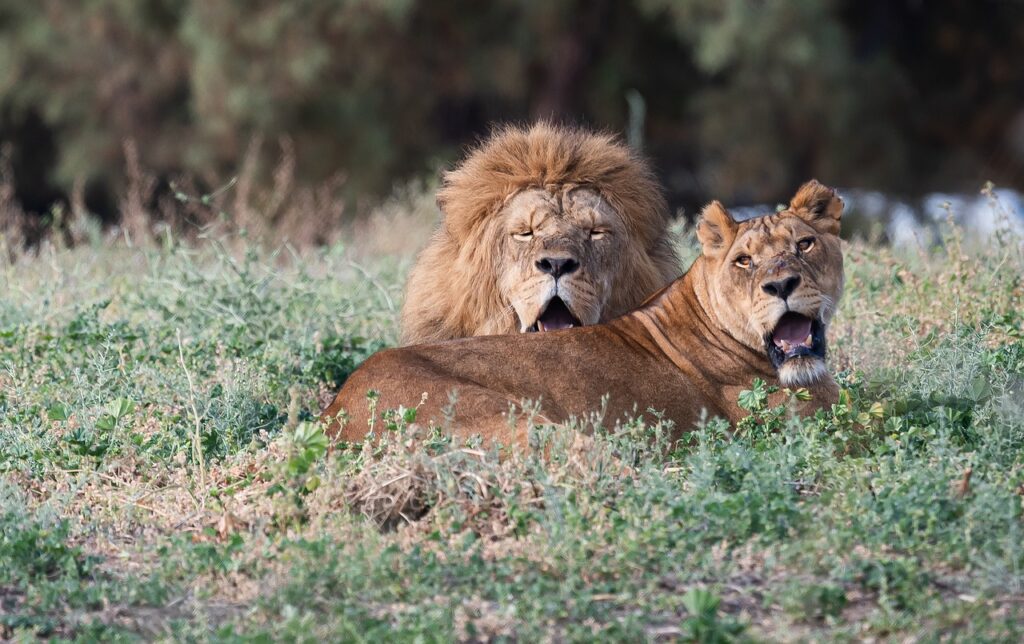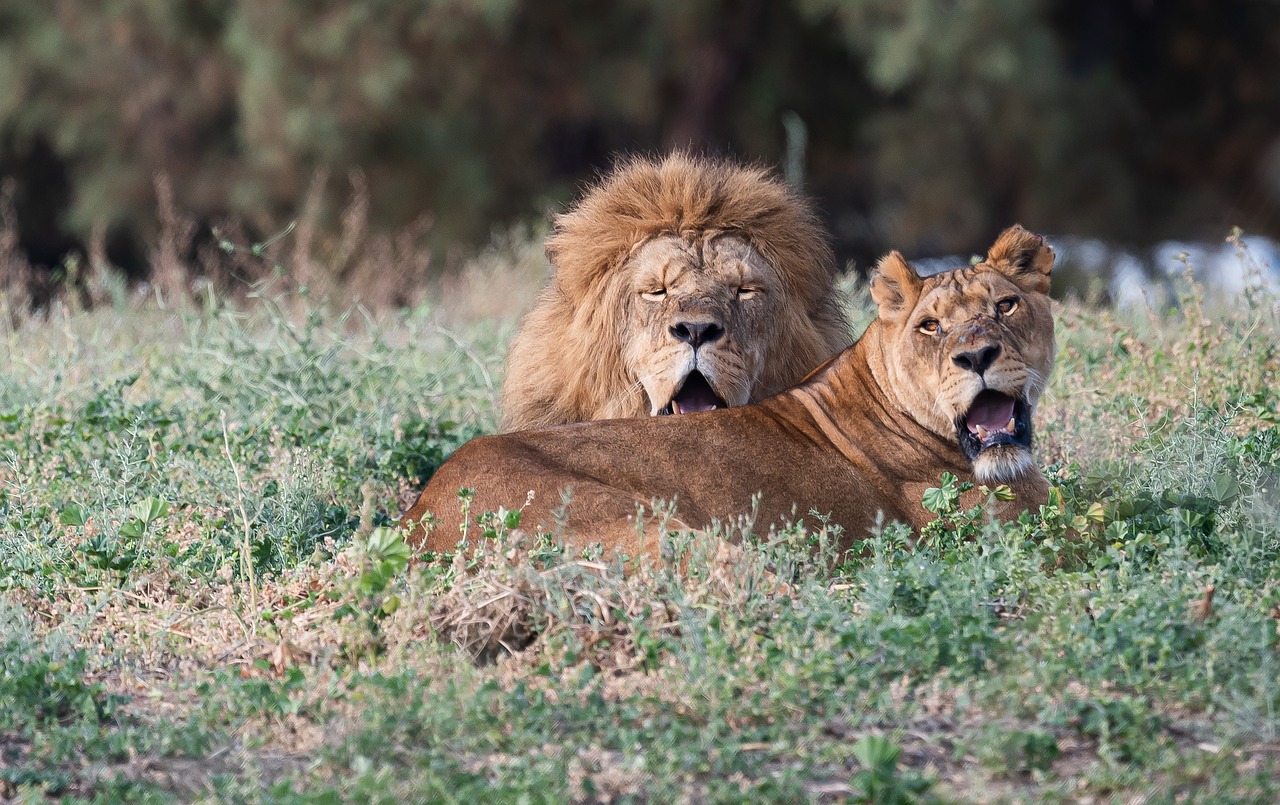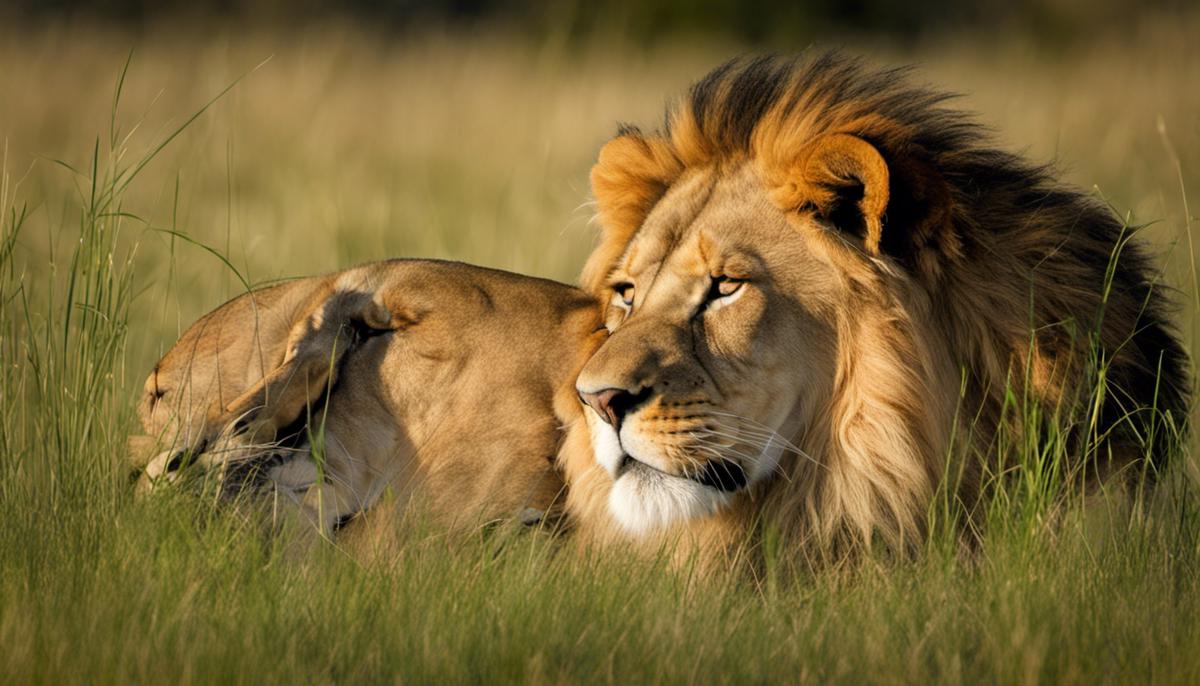What is a group of lions called? A group of lions is called a pride. A pride typically consists of several adult females, their cubs, and a few adult males. The females work together to hunt for food and care for their young, while the males defend the territory from other predators and potential threats. The size of a pride can vary greatly depending on the availability of food and the success of the females in producing cubs. In some cases, prides can become quite large, with up to 30 individuals, while in other cases they may consist of only a few lions.
Lions are one of the most iconic animals in the world, known for their power, beauty, and unique social structure. These majestic creatures are often seen as symbols of strength and courage, and have captured the imagination of people throughout history. One of the most fascinating aspects of lion behavior is the way they live in groups, known as prides.
In this article, we will explore what a group of lions is called, the size and composition of a lion pride, and the behavior and characteristics of these amazing creatures.
From the origins of the word ‘pride’ to the reasons why lions hunt in groups, we will delve into the world of lions and learn more about these fascinating animals.
Whether you are a wildlife enthusiast, a fan of nature documentaries, or simply curious about the natural world, this article is sure to provide you with a wealth of information about one of the most fascinating animals on the planet.
Lions Grouping Terminology
As you dive into the world of lion socialization, you’ll uncover a rich tapestry of terminology that illuminates the intricacies of their family dynamic. Lions’ social behavior is complex, as they live in groups called prides, coalitions, or crèches. The name given to a group of lions depends on their composition and purpose.
Hunting strategies are one of the most significant reasons for lions to group together. Lions hunt in groups because it gives them different advantages. For instance, a group of lions can take down larger prey like buffalo, which would be impossible for a single lion to do.
Leadership within a pride is an essential aspect of lions’ social behavior. A pride is led by a dominant male lion or a group of females, depending on their social structure.
Communication among lions is essential, and they communicate through vocalizations, body language, and scent marking.
Threats to lion groups are many, and they include habitat loss, poaching, and hunting. The human population’s expansion and the destruction of natural habitats pose the most significant threat to the survival of lions. Therefore, efforts to conserve lions and their habitats are necessary to ensure their continued existence.
The terminology used to describe lion socialization is a testament to their complex social behavior and highlights the importance of protecting them.

Pride Composition
A pride of lions consists of a mix of male and female lions, with an average size of around 15 individuals, and can include a crèche of baby cubs. However, pride size can vary greatly depending on factors such as the availability of food and water, as well as the territorial size of the pride’s hunting ground. The larger the territory, the more lions a pride can support.
Within a pride, there is a dominance hierarchy among members. Male lions are typically the most dominant and lead the pride, while females play a crucial role in hunting and raising cubs. Communication methods within a pride include vocalizations such as roaring, growling, and purring, as well as visual cues such as tail movements and body posture.
Hunting behavior of a pride is also a complex social activity. Lions work together to take down prey, with females often leading the hunt. Social roles and responsibilities within a pride include hunting, protecting the territory, and raising cubs.
A pride is a close-knit family unit that relies on each other for survival in the wild.
Origin of ‘Pride’
You may have heard that the origin of the word ‘pride’ for a group of lions comes from their proud and strong nature, but the truth is that it actually originates from the Latin word ‘praeda’, which means prey. This word was used to describe the act of hunting for food, which is a behavior that lions are known for.
The word ‘praeda’ eventually evolved into ‘pride’, which is now commonly used to refer to a group of lions. The influence of lions on human culture and mythology is undeniable, and the word ‘pride’ has played a significant role in this. Lions have been seen as symbols of strength, bravery, and power for centuries, and the word ‘pride’ has only strengthened this association.
The linguistic variations of the word in different cultures also reflect this symbolism, with some languages using words that mean ‘royal family’ or ‘king’s court’ to describe a group of lions. The cultural significance of the word ‘pride’ extends beyond just lions, as it has also been used to describe groups of humans who share a common identity or purpose.
The word has taken on a new meaning in recent years with the rise of LGBTQ+ pride movements, which use the word to celebrate and empower those who identify as part of the community. In this way, the origin of the word ‘pride’ for a group of lions has had a far-reaching impact on human culture and language.
Behavior and Characteristics
You’ll learn about the behavior and characteristics of these majestic creatures, from their hunting tactics to their sleeping habits.
Here are some interesting facts about lions:
- Advantages of group hunting: Lions are social animals and rely on teamwork to hunt their prey. Hunting in a group increases their chances of success, as they can surround and overpower large prey such as wildebeest and buffalo. Lions also use strategic planning, with some members of the pride acting as decoys while others launch a surprise attack.
- Sleeping patterns of lions: Lions are known for their long periods of rest, often sleeping for up to 20 hours a day. They are most active during the cooler hours of the day and at night, when they hunt and patrol their territory. Sleeping in a group also provides lions with protection and helps them conserve energy.
- Communication within a pride: Lions use a variety of vocalizations to communicate with one another, including roars, grunts, and growls. They also use body language, such as tail movements and postures, to convey their intentions and emotions. Within a pride, there is a dominance hierarchy, with the strongest and most dominant individuals taking control of resources such as food and mating opportunities.
The social bonds between lionesses are particularly strong, as they live together in a pride for most of their lives. They work together to raise their cubs, often nursing each other’s young and protecting them from danger. These bonds help to ensure the survival of the pride, as they rely on each other for protection and support.
Lions may be fierce predators, but their social behavior and strong bonds make them fascinating creatures to study.
Naming a Family of Lions
Get ready to learn how to name a family of these majestic creatures! Lions live in groups, and their family dynamics are quite unique.
A group of lions is not just a bunch of individuals living together – they have a social hierarchy, communication methods, and hunting tactics that they use to live and thrive as a family.
Lion family dynamics are interesting because they’re not like the typical human family. Male lions leave their birth pride when they reach maturity and create their own coalition. In contrast, female lions usually stay in their birth pride for their entire lives.
Lionesses are more connected with their young, and they raise them together in a group called a crèche. The pride of lionesses also has a social hierarchy, with the dominant female leading the group and making important decisions.
Lion grouping benefits the animals in many ways. Lions go hunting their prey in groups, and this gives them different advantages. For example, they can surround their prey and attack it from different angles.
Also, a group of lions can protect each other from other predators, like hyenas or leopards. Lions also have specific communication methods to stay in touch with each other. They roar to locate each other, and they use different types of vocalizations to communicate different messages.
All of these elements make up a family of lions, or what we call a pride.
Group of Male Lions
Discover the unique family dynamics of male lions and their coalition. Male lions leave their birth pride at around 2-3 years old to create their own coalition. A coalition is a group of 2 to 6 male lions that work together to protect their territory and hunt for food.
The coalition hierarchy is determined by size and strength, with the largest and strongest male being the leader. However, the leader may change over time if a younger or stronger male challenges him for the position.
The coalition also has a social structure, with each member having a specific role in hunting and protecting the territory. Male lion behavior in a coalition differs from that of a pride of lionesses. While lionesses hunt in groups and rely on each other to protect their young, male lions use their strength and size to intimidate other predators and take over territory.
Hunting strategies also differ, with male lions often relying on ambush techniques rather than coordinated group hunting.
Group of Female Lions
Female lions, also known as lionesses, have a strong bond with their cubs and work together to hunt for food and protect their territory. They are essential to the pride’s survival, as they are the primary hunters and take care of the young.
Lionesses have a well-defined social hierarchy and work together to take down prey that is much larger than themselves. They use their intelligence, agility, and strength to ambush their prey and bring it down with a powerful bite to the neck.
The maternal instincts of lionesses are incredibly strong. They keep their cubs in a crèche, where they care for and protect them. The lionesses in the pride cooperate to take care of the cubs, even nursing each other’s young. These social bonds are essential for the survival of the pride, as they help to ensure that the next generation is protected and provided for.
Lionesses use complex communication patterns to coordinate their hunting strategies. They use a variety of vocalizations, such as growls, roars, and grunts, to communicate with each other. They also use body language, such as tail flicks and ear movements, to signal to each other during the hunt. These communication patterns are critical for their success, allowing them to work together effectively and efficiently.
Group of Baby Lions
You already know about lion prides, but did you know that a crèche of cute baby lions is also an important part of their social structure? A crèche is a group of baby lions that are kept together by lionesses. These cubs are usually born within a few weeks of each other and grow up together in the crèche.
Baby lion behavior is quite different from that of adult lions. They’re playful and curious, often engaging in mock fights with each other. Lion cubs also have a strong instinct to suckle, and they’ll often try to nurse from any lactating female lion nearby.
Lionesses are fiercely protective of the cubs in the crèche, and they’ll fight to defend them against predators such as hyenas or leopards.
The formation of a crèche is essential for lion cub care and socialization patterns. Lion cubs learn important skills from each other, such as how to hunt and how to interact with other lions. The cubs also learn how to recognize and communicate with each other through vocalizations and body language.
These socialization skills are essential for the cubs to survive and thrive in the wild. Maternal instincts play a crucial role in the formation and maintenance of the crèche, as lionesses take responsibility for nursing and caring for the cubs.
In summary, a crèche of baby lions is a vital part of the social structure of lion prides. These groups of cute and playful cubs are kept together by lionesses and learn important skills from each other through socialization. The maternal instincts of lionesses play a crucial role in the formation and maintenance of the crèche, ensuring that the cubs grow up strong and ready to face the challenges of the wild.
Frequently Asked Questions
What is the social hierarchy among female lions in a pride?
Female lions in a pride exhibit a complex social hierarchy, where female dominance is crucial for survival. This hierarchy is similar to a matriarchal society, where the alpha female is the leader and makes decisions for the group.
Hunting strategies are also coordinated, with lionesses working together to take down prey. The females are responsible for cub rearing and form strong social bonds with each other and their young.
Territorial disputes are common, and the pride defends its territory against intruders, often resulting in violent confrontations.
Overall, the social structure of a pride is essential for its survival, and female dominance plays a critical role in maintaining it.

How do lions communicate with each other in a group?
Lions are known for their communication skills, which are essential for their survival as a group. They use different methods to communicate with each other, including roaring signals, scent marking, and visual cues.
Roaring signals are used to communicate over long distances, while scent marking is used to mark territories and communicate with other lions. Visual cues are also used to communicate with other members of the group.
Lions also benefit from cooperation when hunting, as they can take down larger prey by working together. By using their communication skills, lions are able to coordinate their hunting strategies and increase their chances of success.
What are the different roles played by male and female lions in a pride?
The dynamic of a lion pride is fascinating. Each member plays a crucial role in the group’s survival. Male domination is common, with coalitions of two to six males leading the pride and defending their territory. The females play an equally important role, providing maternal care and hunting strategies to ensure the pride’s survival.
Intra-pride conflicts are common, with both males and females vying for dominance and territory. Despite this, the pride remains a cohesive family unit. Each member relies on the others for survival in the harsh African savannah.
Do lions have any natural predators in the wild?
Lions are apex predators in their habitat, and they don’t have any natural predators in the wild. Their hunting techniques and prey selection depend on the size and strength of the pride. They have excellent survival skills and territorial behavior, which helps them to stay protected from other predators.
Lions mate throughout the year, and female lions give birth to cubs after a gestation period of around 110 days. They raise their young in a crèche and teach them hunting skills.
Lions are social animals, and they live in groups called prides. These prides consist of females and their young, while male lions form coalitions.
Lions are fascinating animals, and their behavior and characteristics make them one of the most iconic animals on the planet.
How long do lions typically live in the wild?
Lions are majestic creatures that evoke a sense of awe in anyone fortunate enough to witness them in their natural habitat. They have a life span of around 10-14 years in the wild, and their habitat range includes grasslands, savannas, and even some forests.
Lions are known for their unique mating behavior, where a male lion takes over a pride and mates with all the females. They also have distinctive hunting patterns, where they work together as a group to take down their prey.
Territorial disputes can be intense, with lions fiercely defending their territory from other lions and other predators and sometimes resulting in deadly conflicts. Despite their fierce reputation, lions are a symbol of belonging and pride for many cultures, and their presence in the wild is a reminder of the beauty and power of nature.
Conclusion
In conclusion, lions are fascinating animals that live in groups called prides. A pride is typically composed of several females, their cubs, and a few males.
Lions are social creatures, and they exhibit unique behaviors and characteristics that make them stand out from other big cats. For instance, they communicate with each other through vocalizations, and they hunt in groups to increase their chances of success.
Despite their majestic appearance, lions face numerous threats in the wild, including habitat loss, poaching, and human-wildlife conflict. However, efforts are being made to conserve these magnificent animals and their habitats to ensure that future generations can appreciate them.
In juxtaposition to their fierce and powerful nature, lions have a softer side when it comes to their familial bonds and social behavior. The intricacies of their pride dynamics are truly awe-inspiring, and understanding these aspects adds to the wonder of these magnificent creatures.
As humans continue to coexist with lions, it’s crucial to protect and respect them in order to maintain a balance between our species and the natural world.



